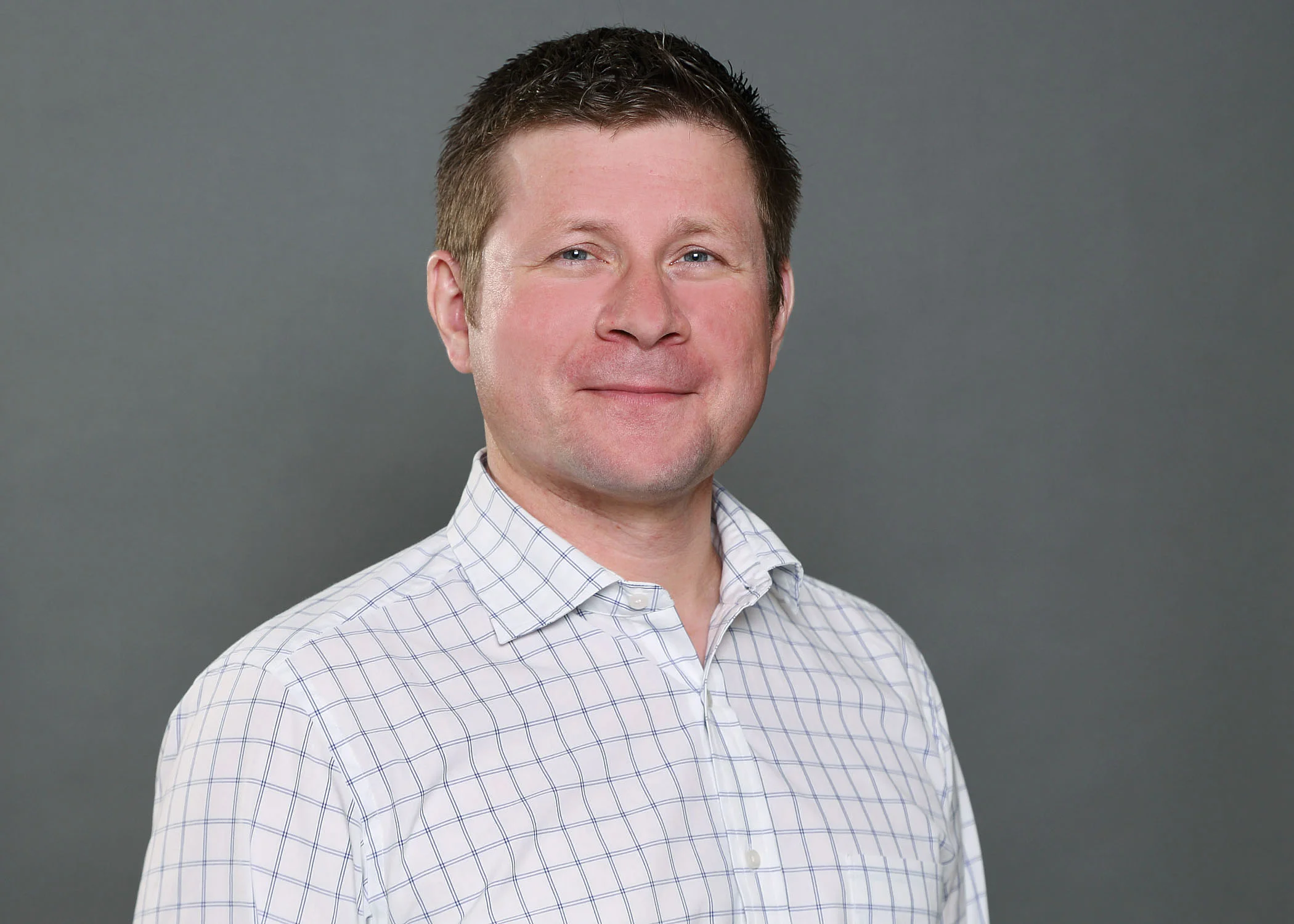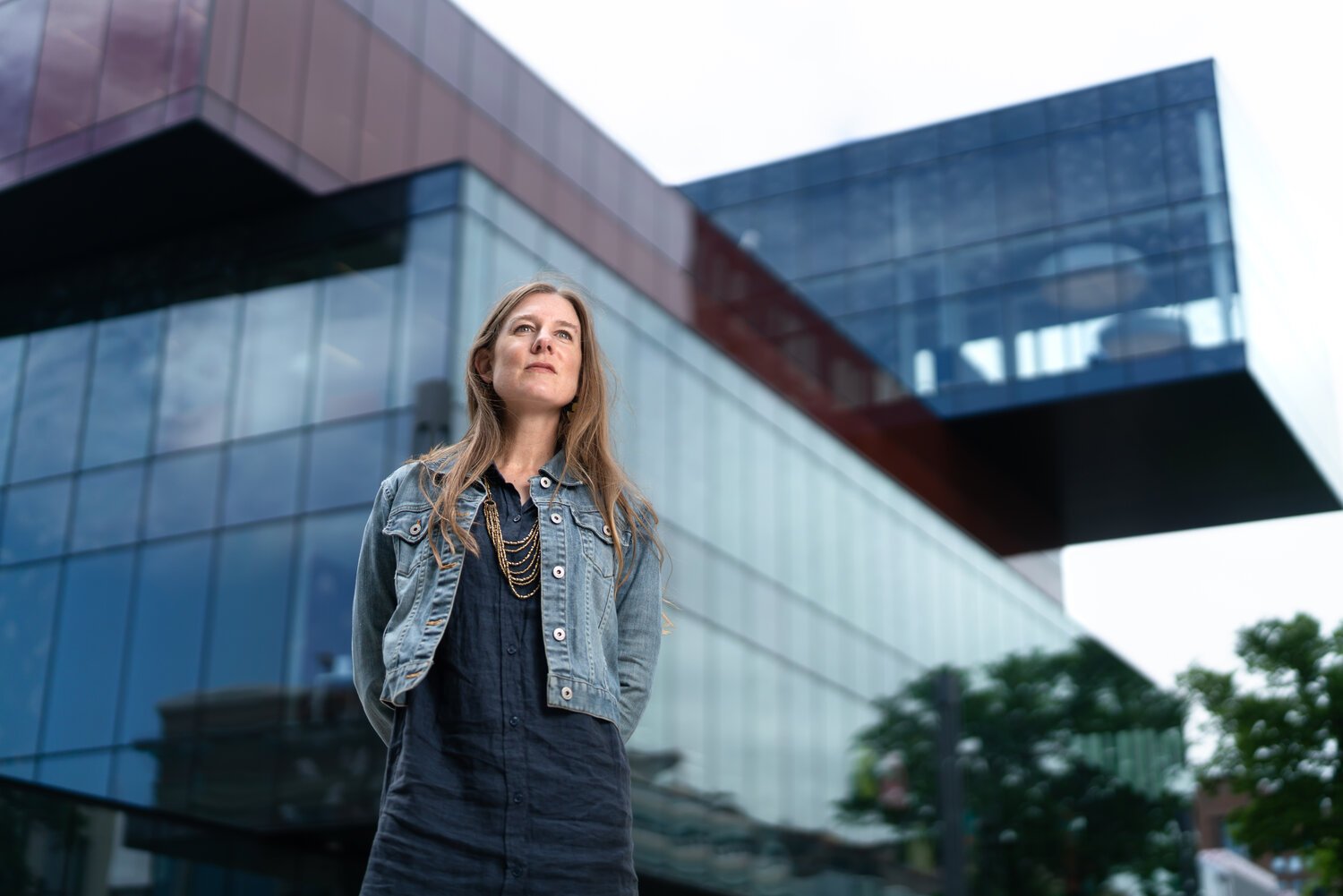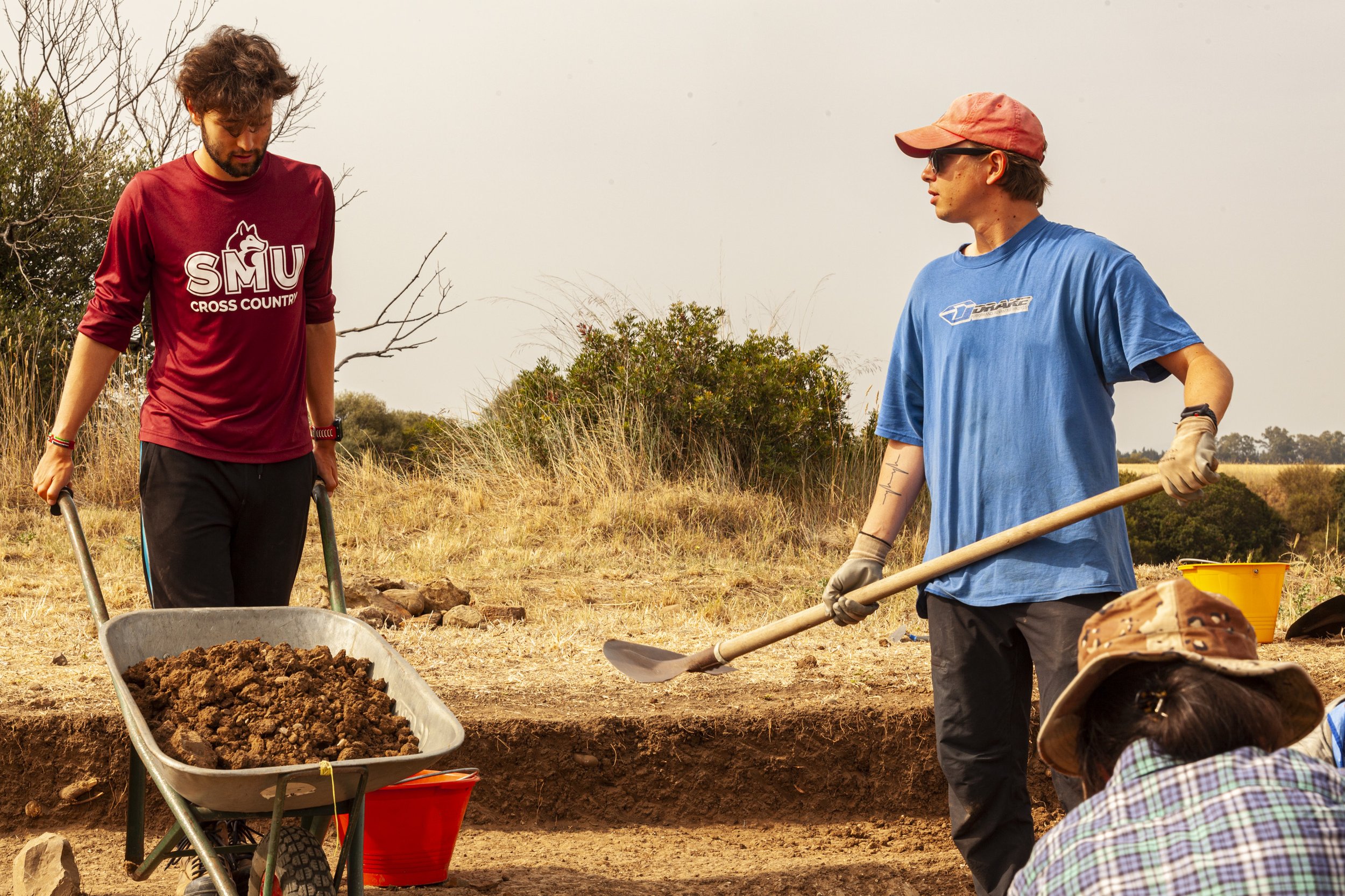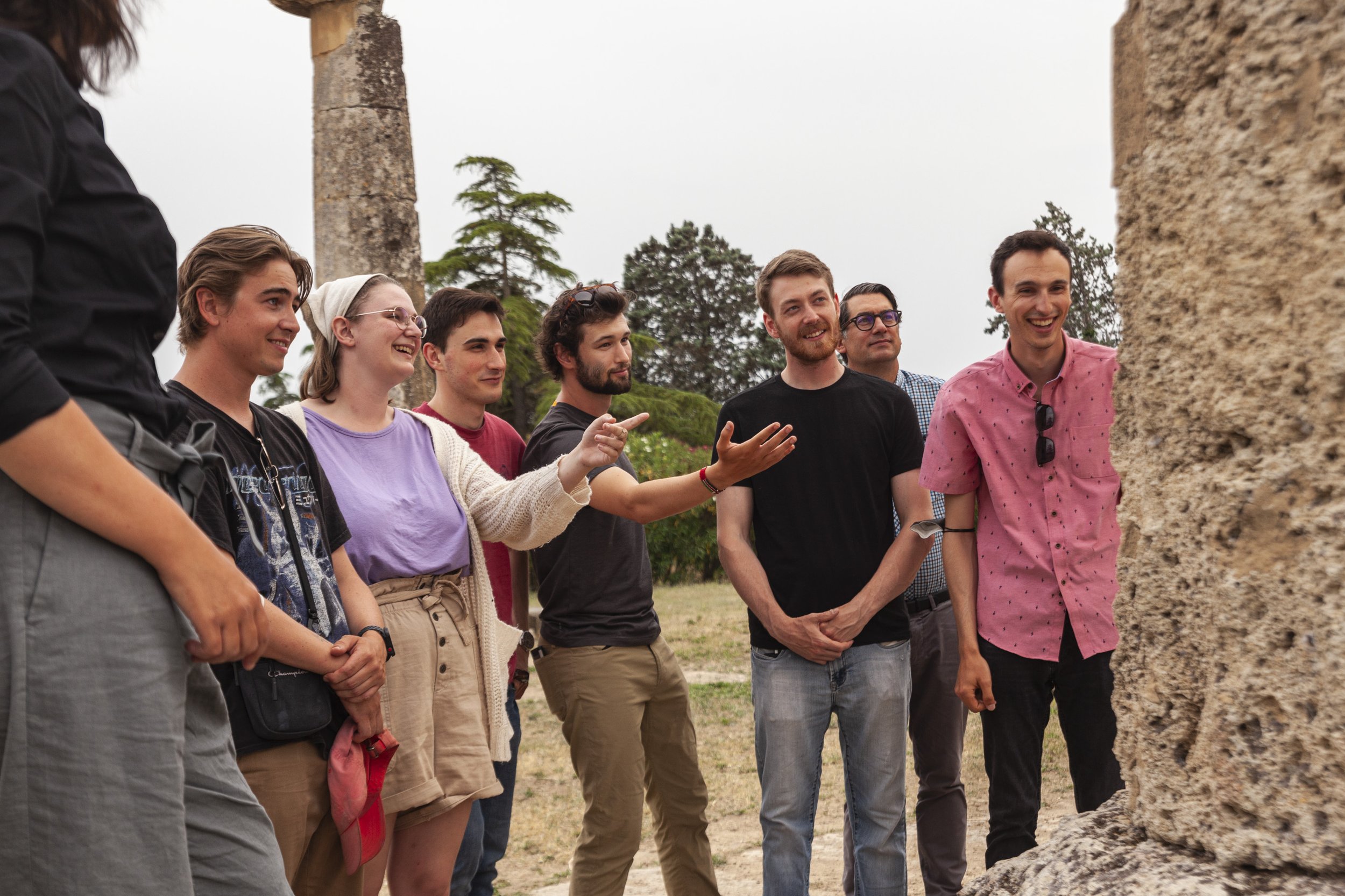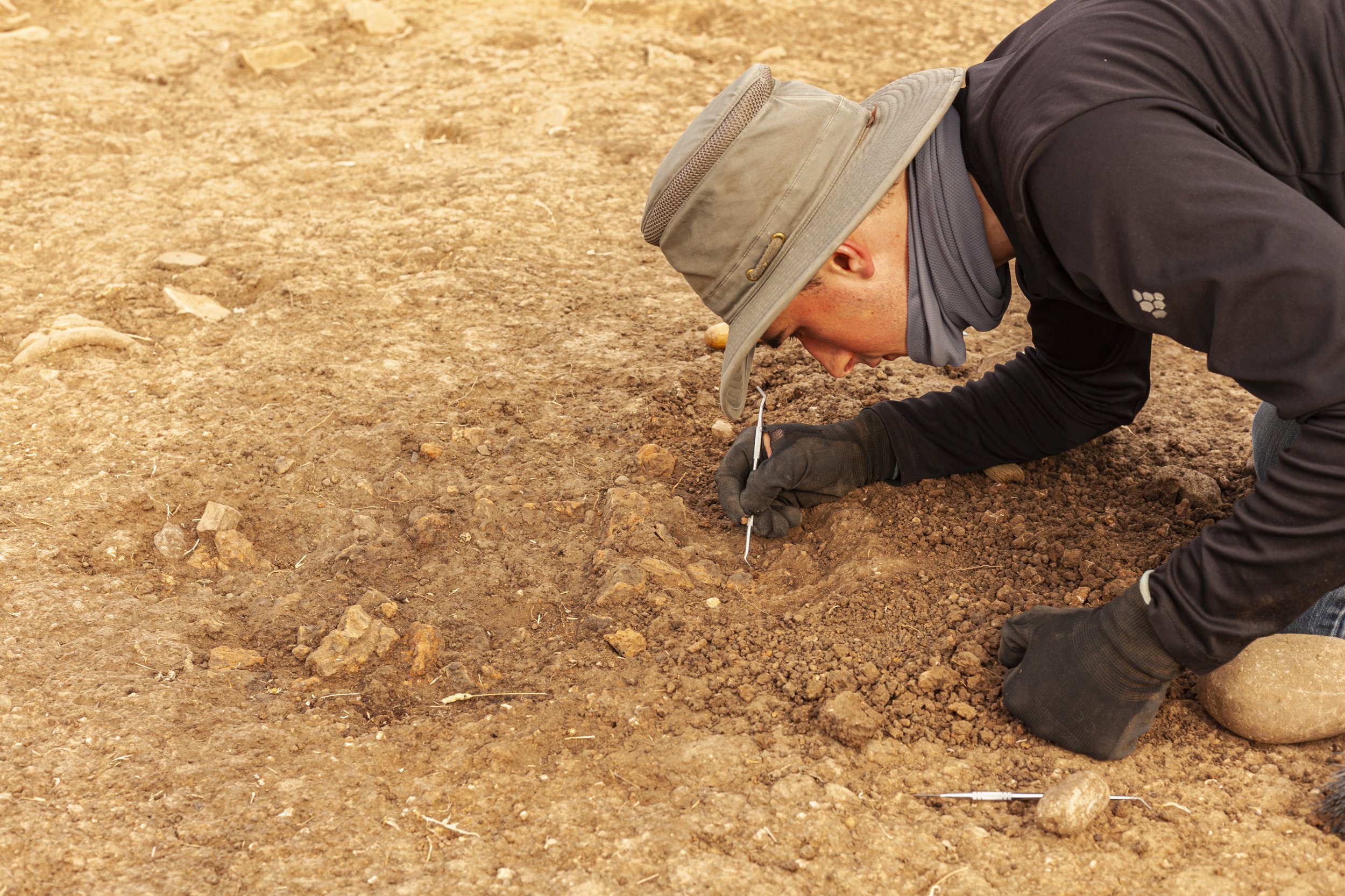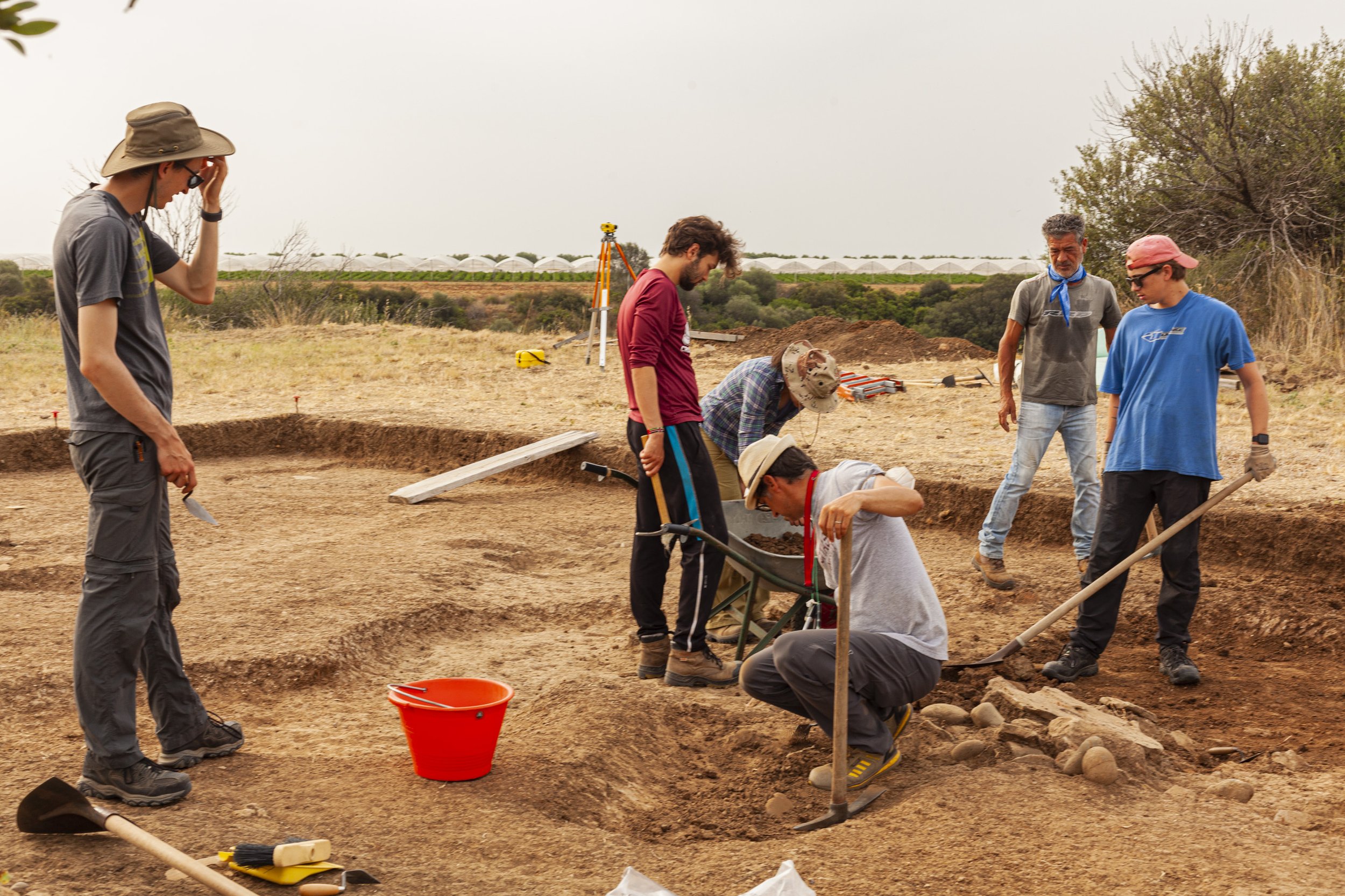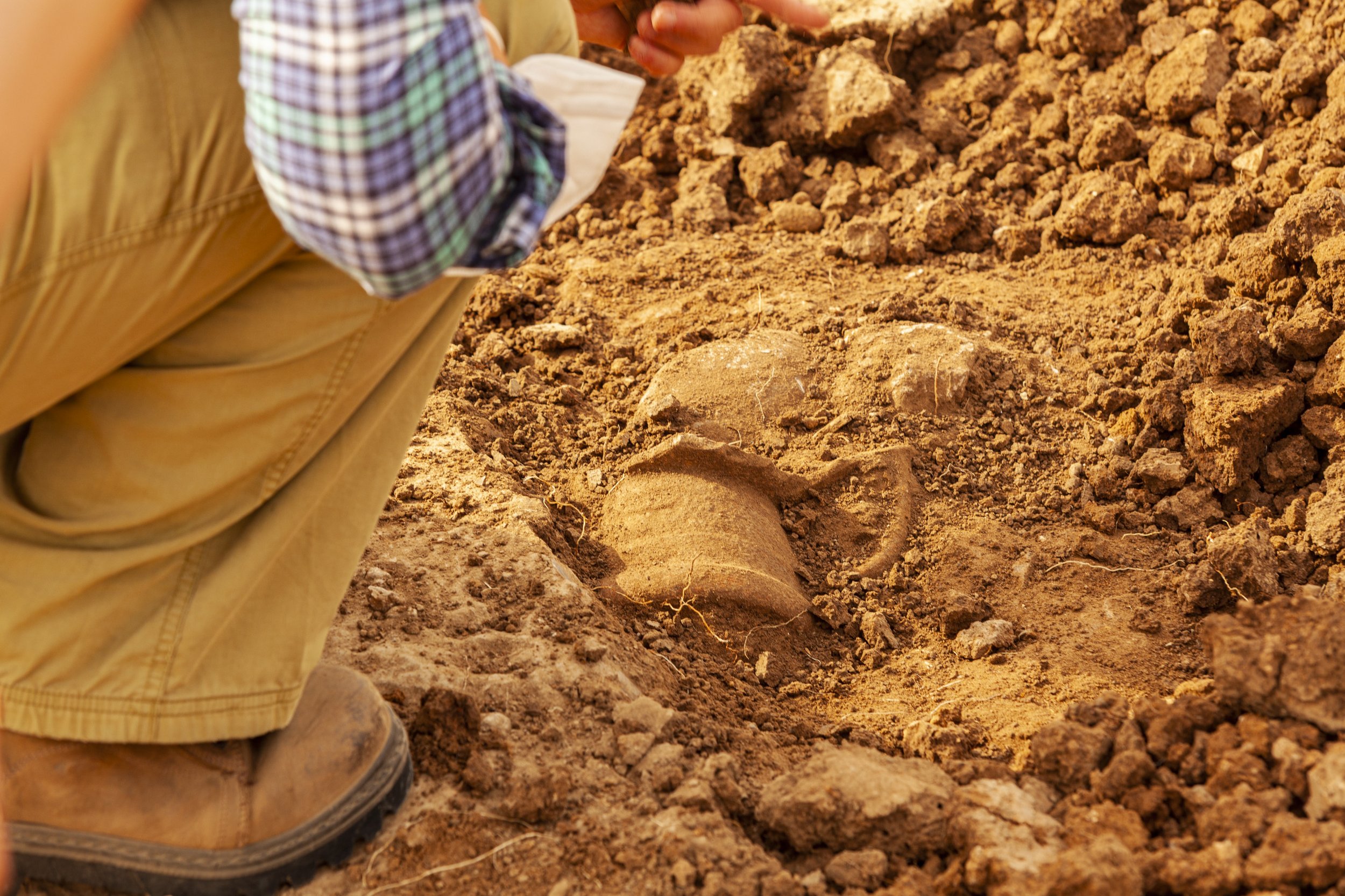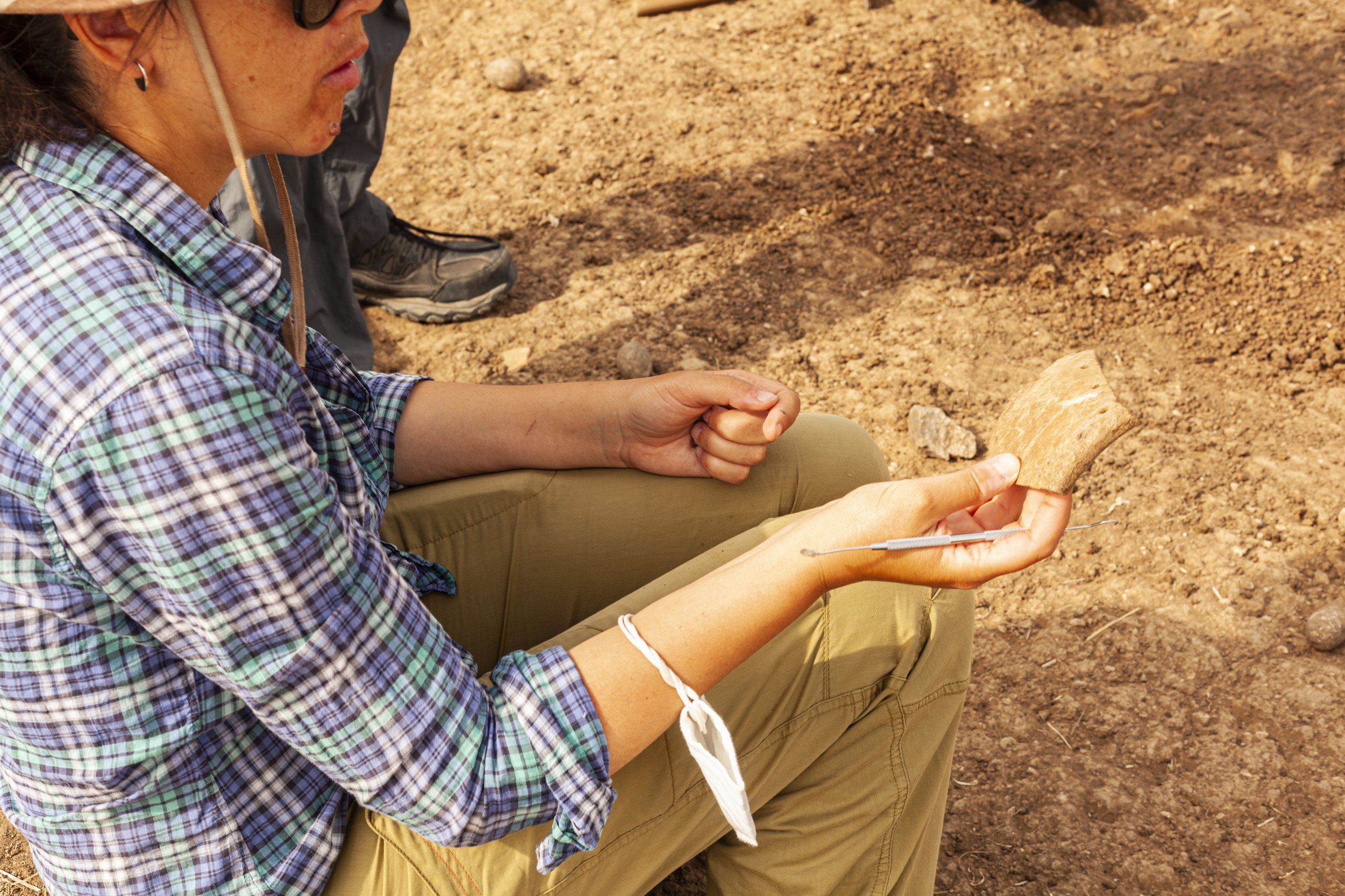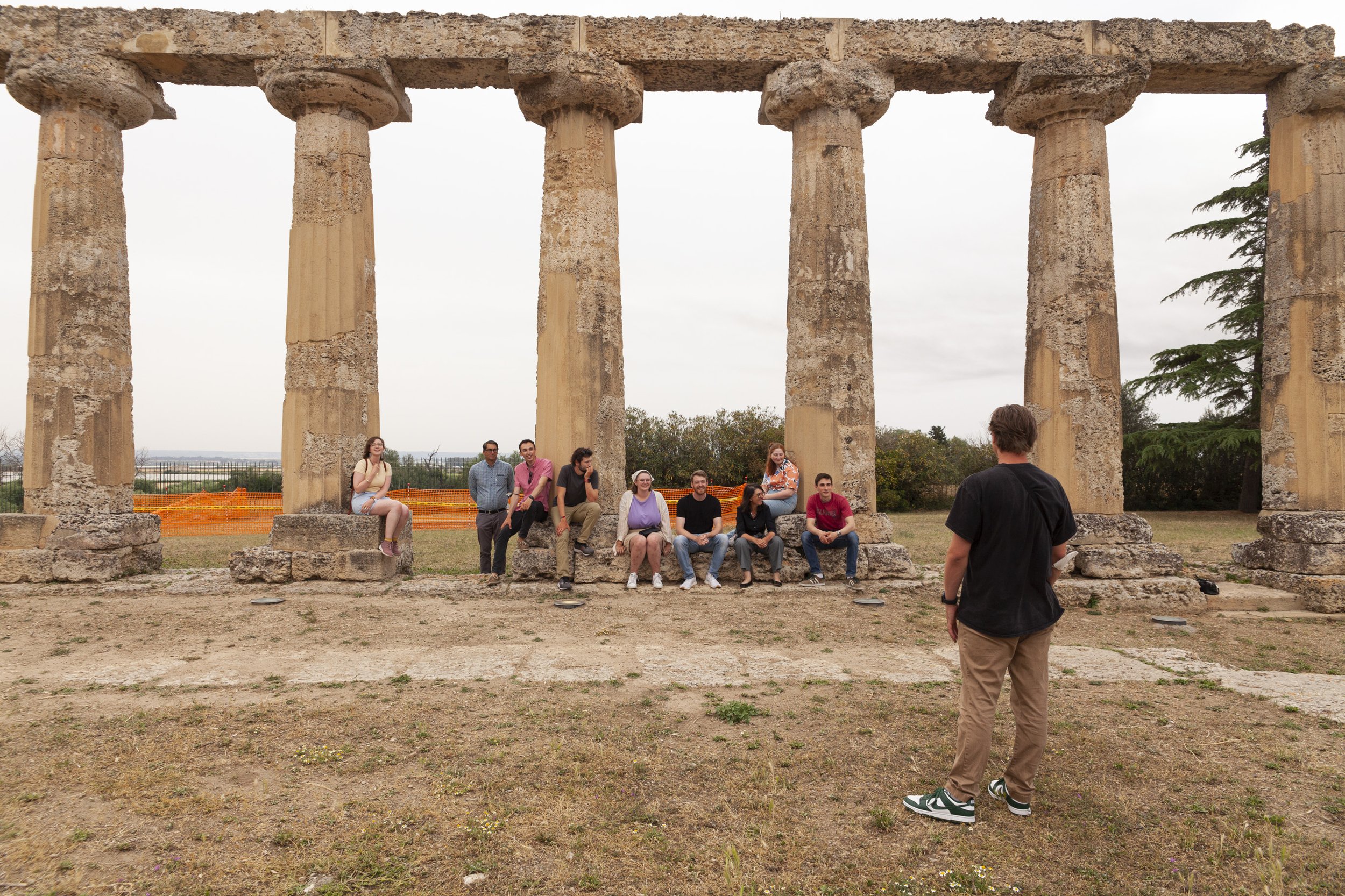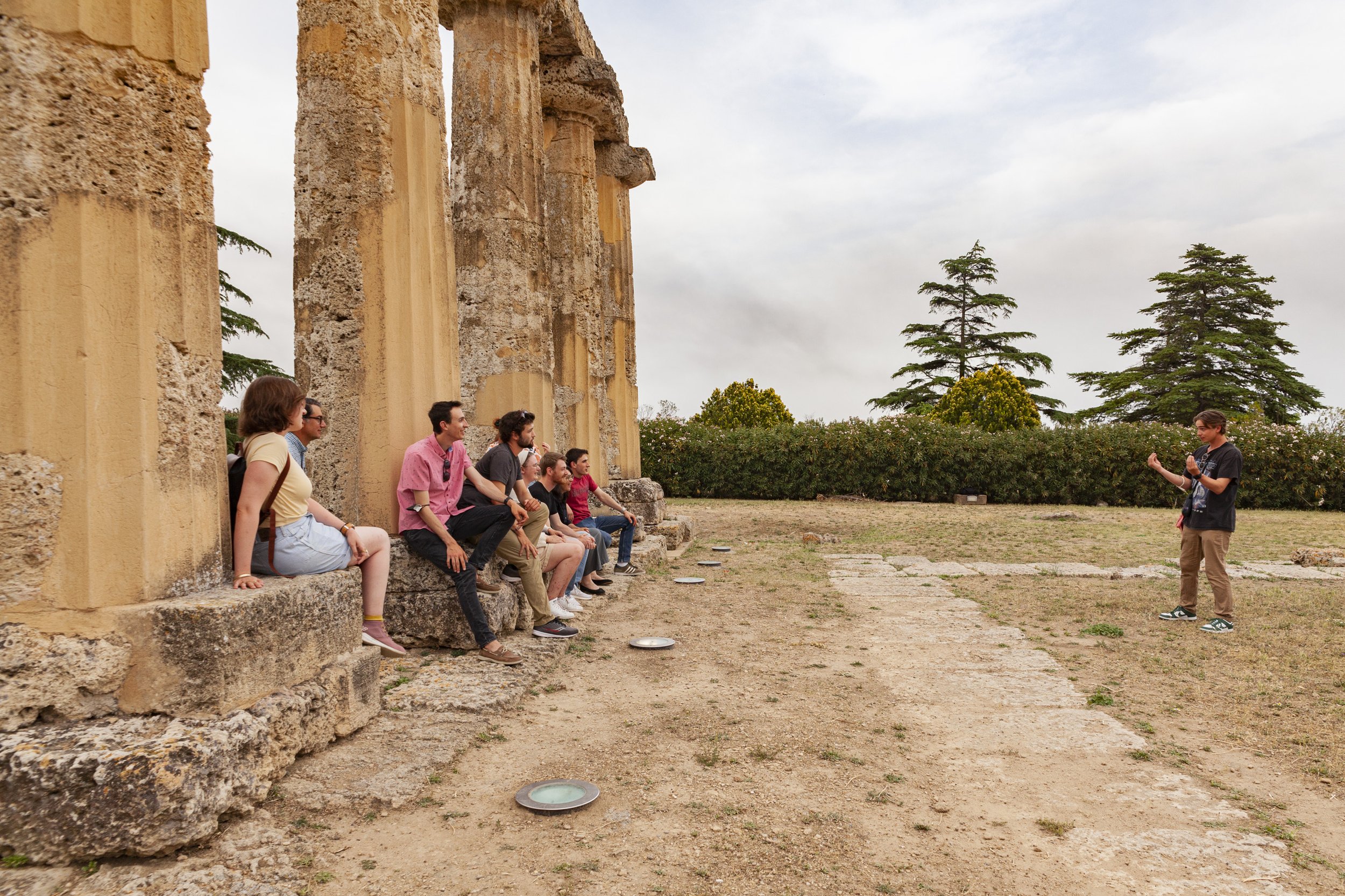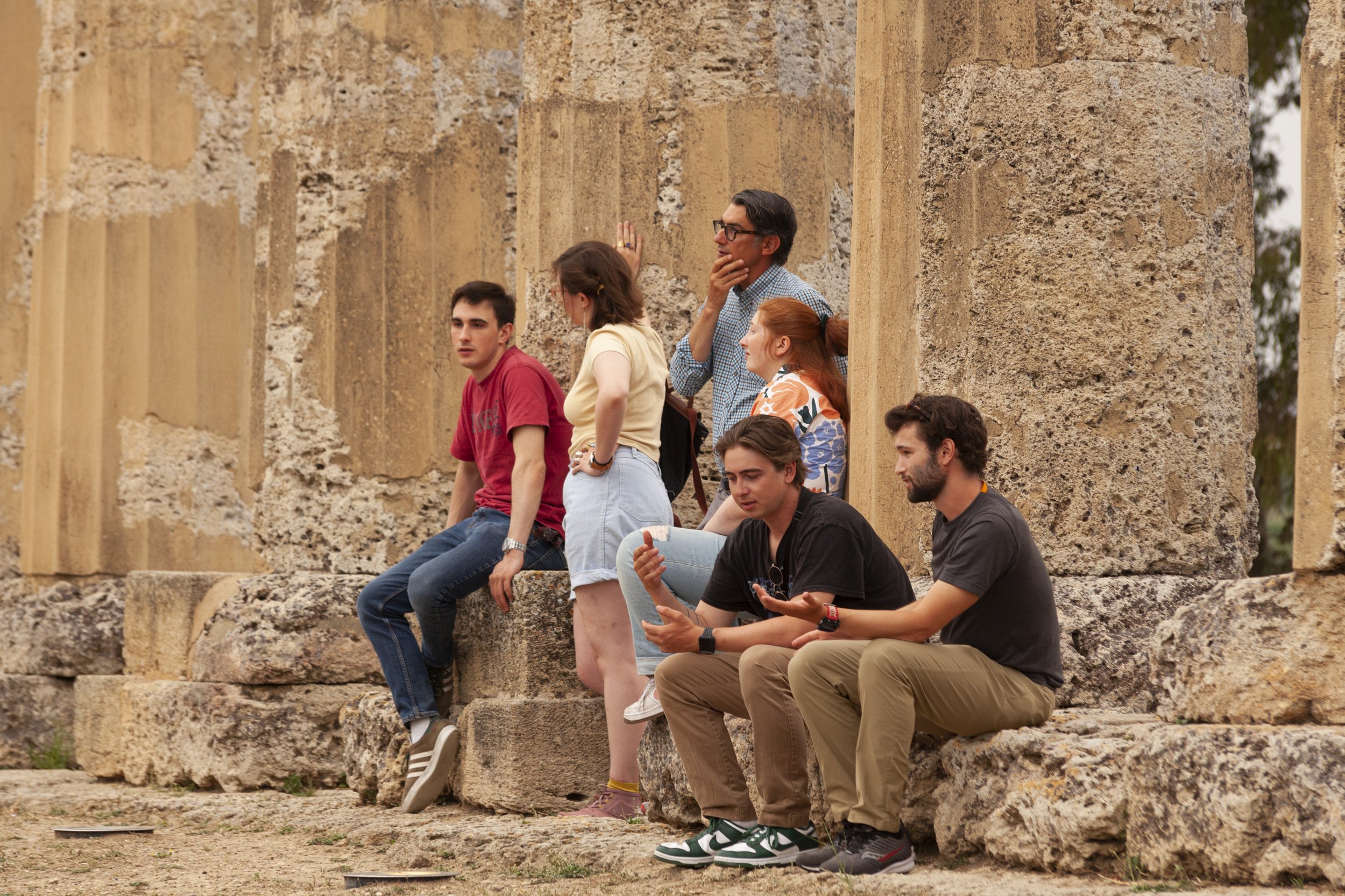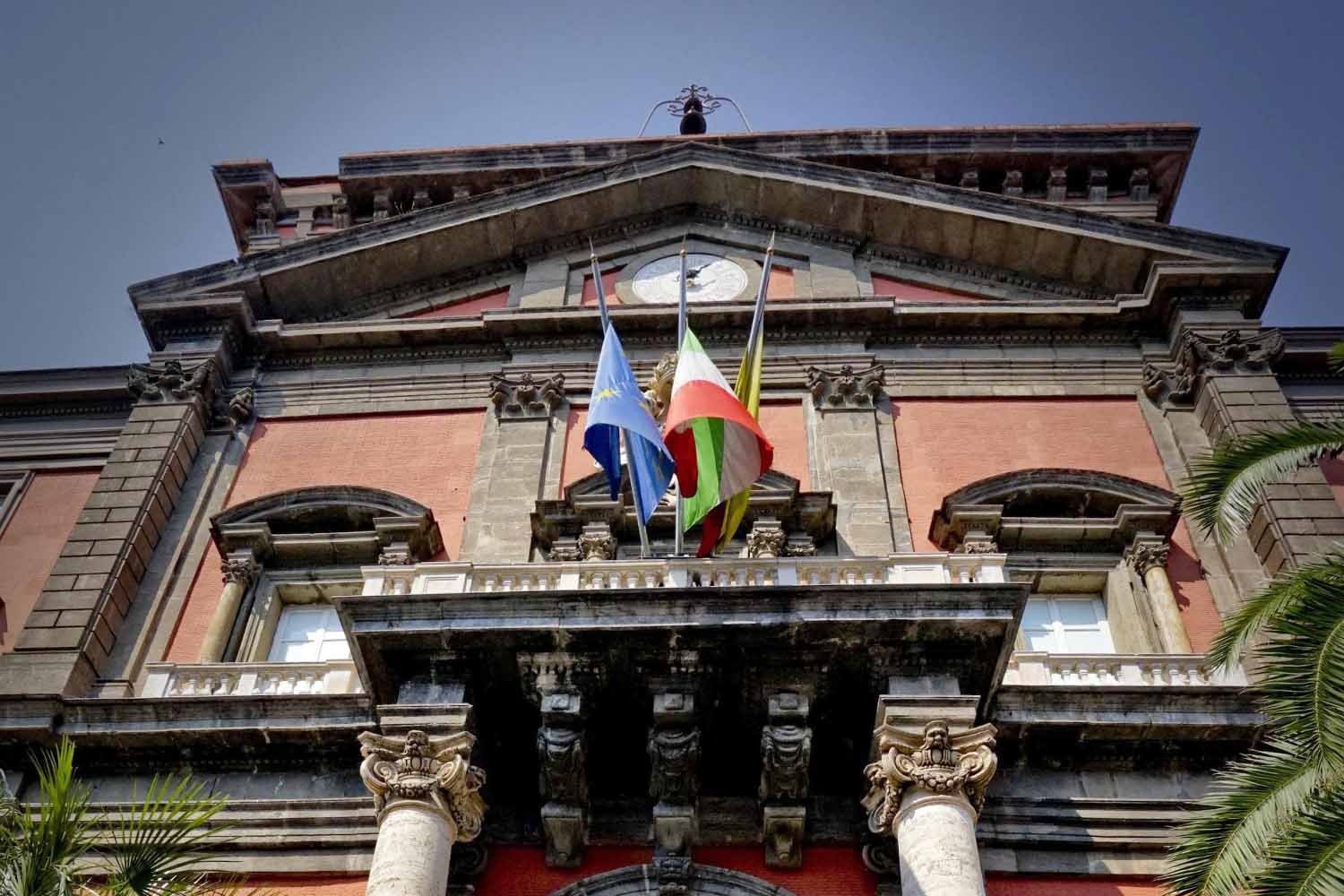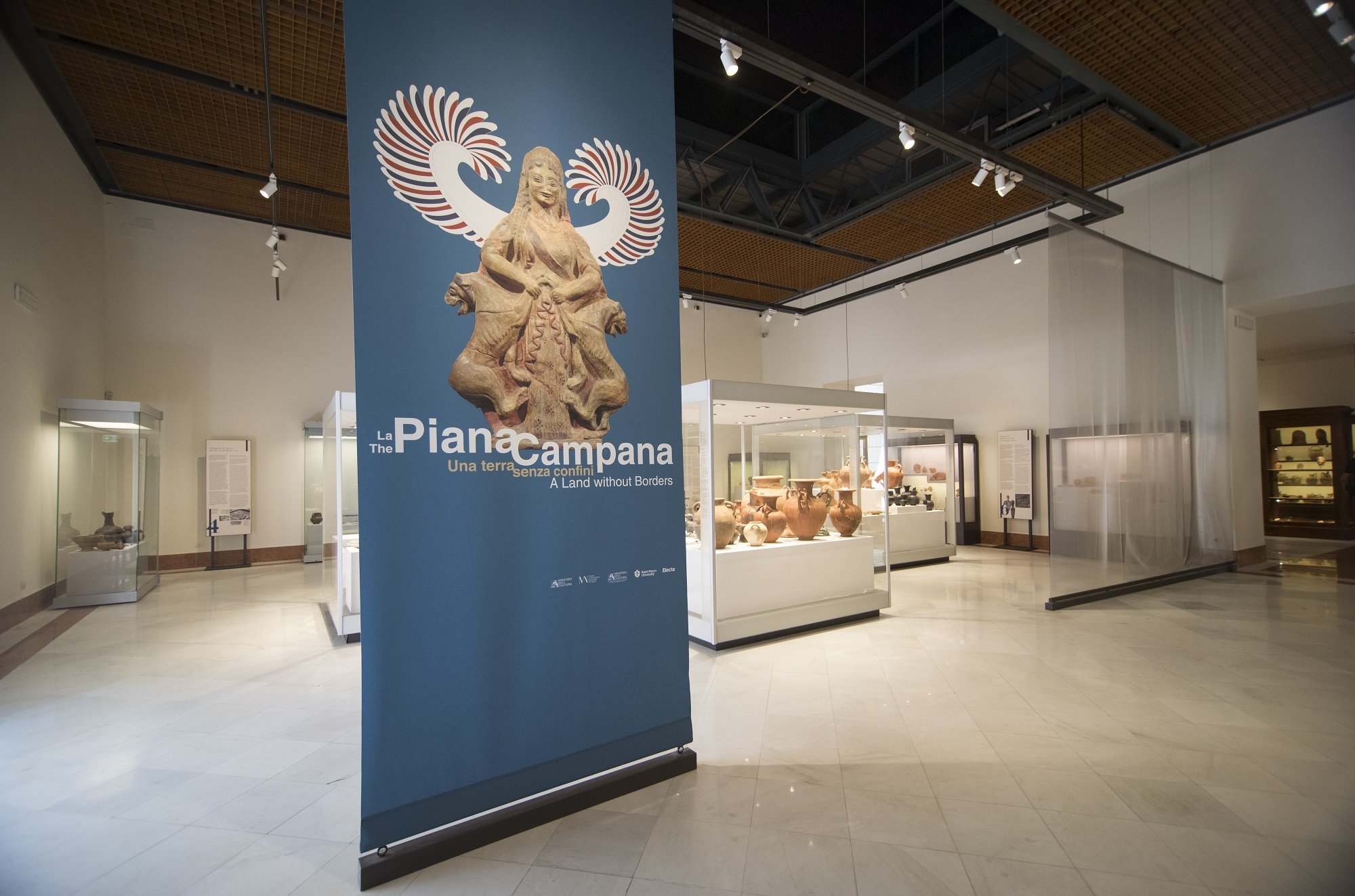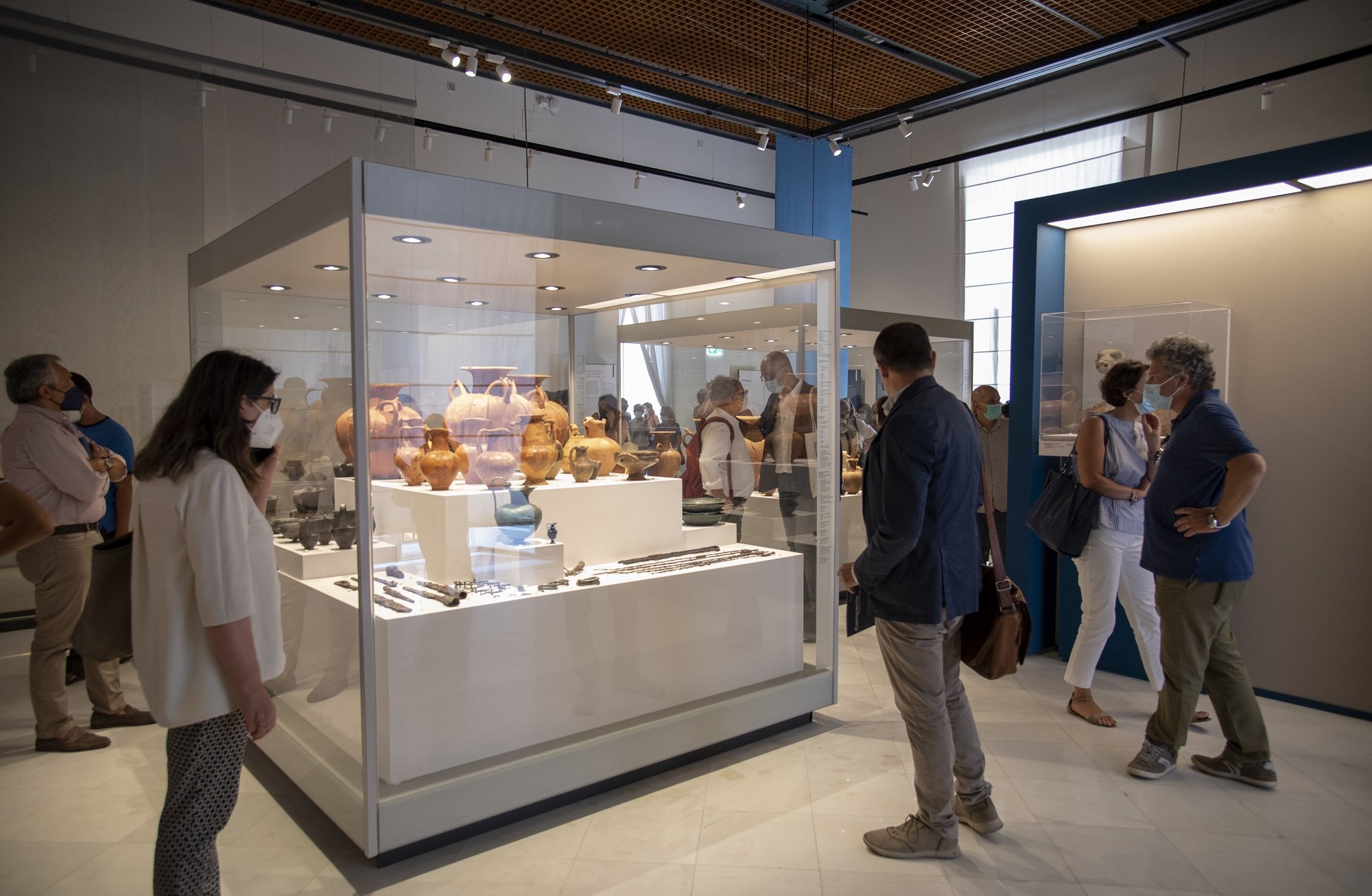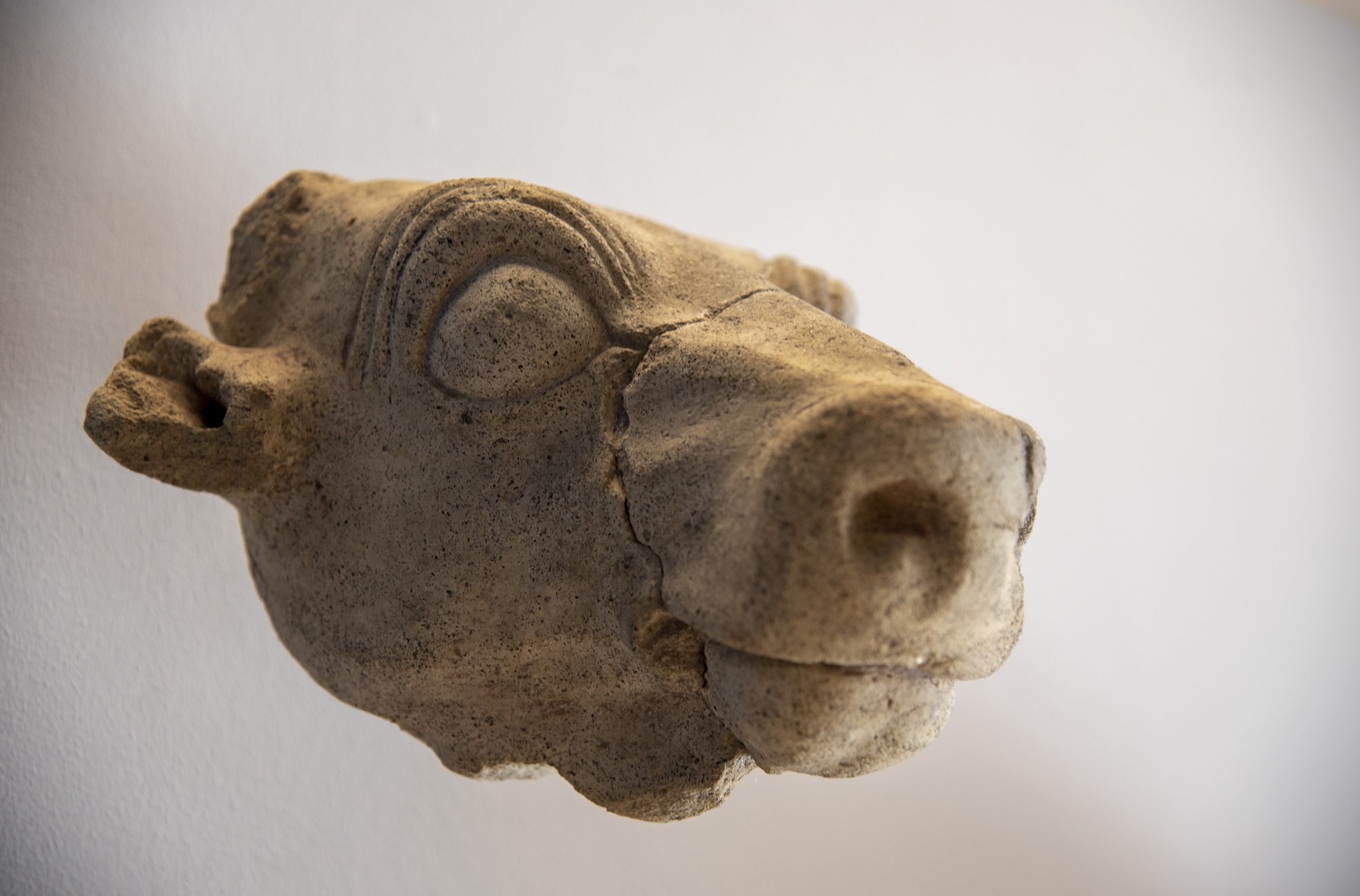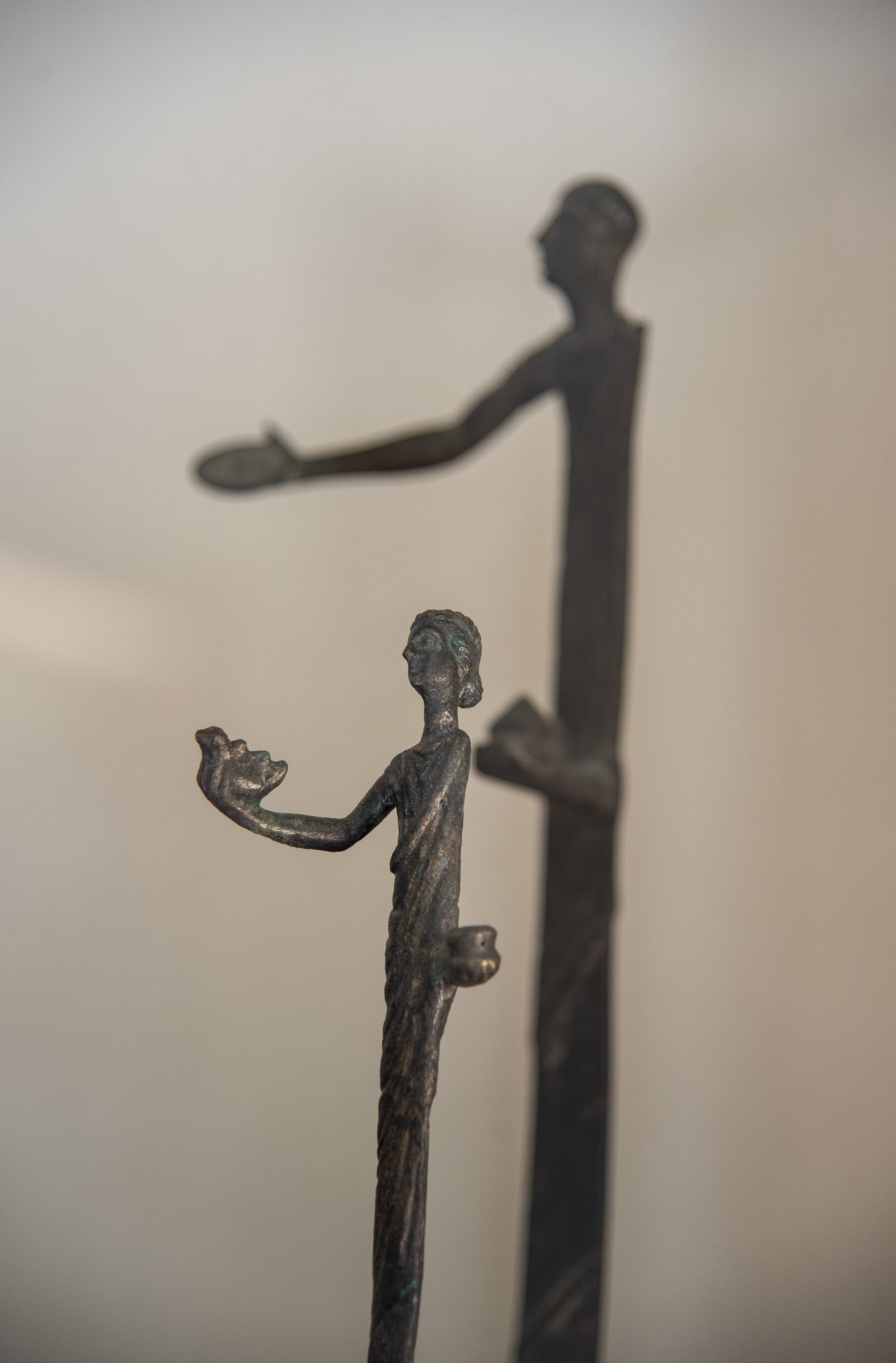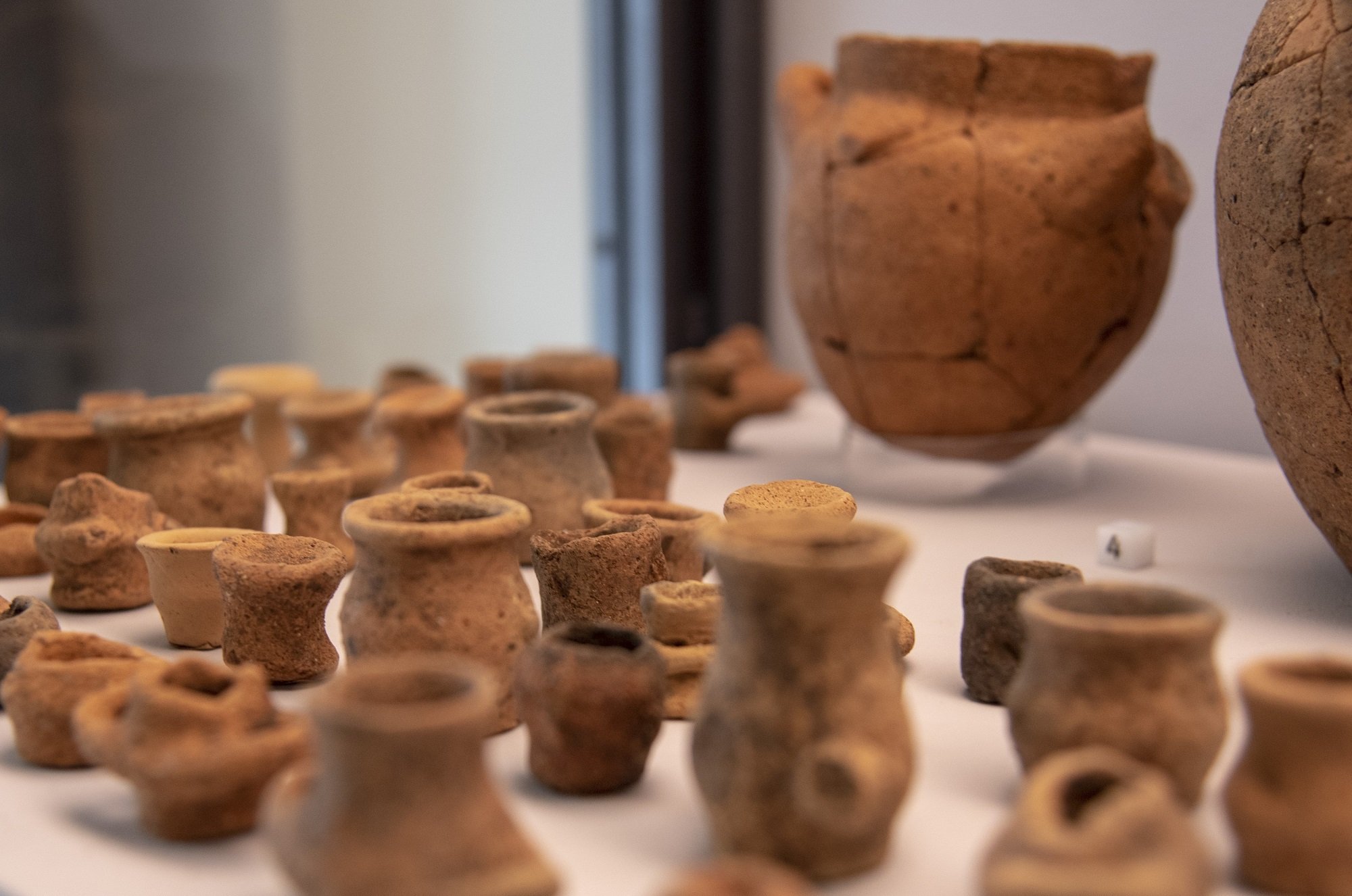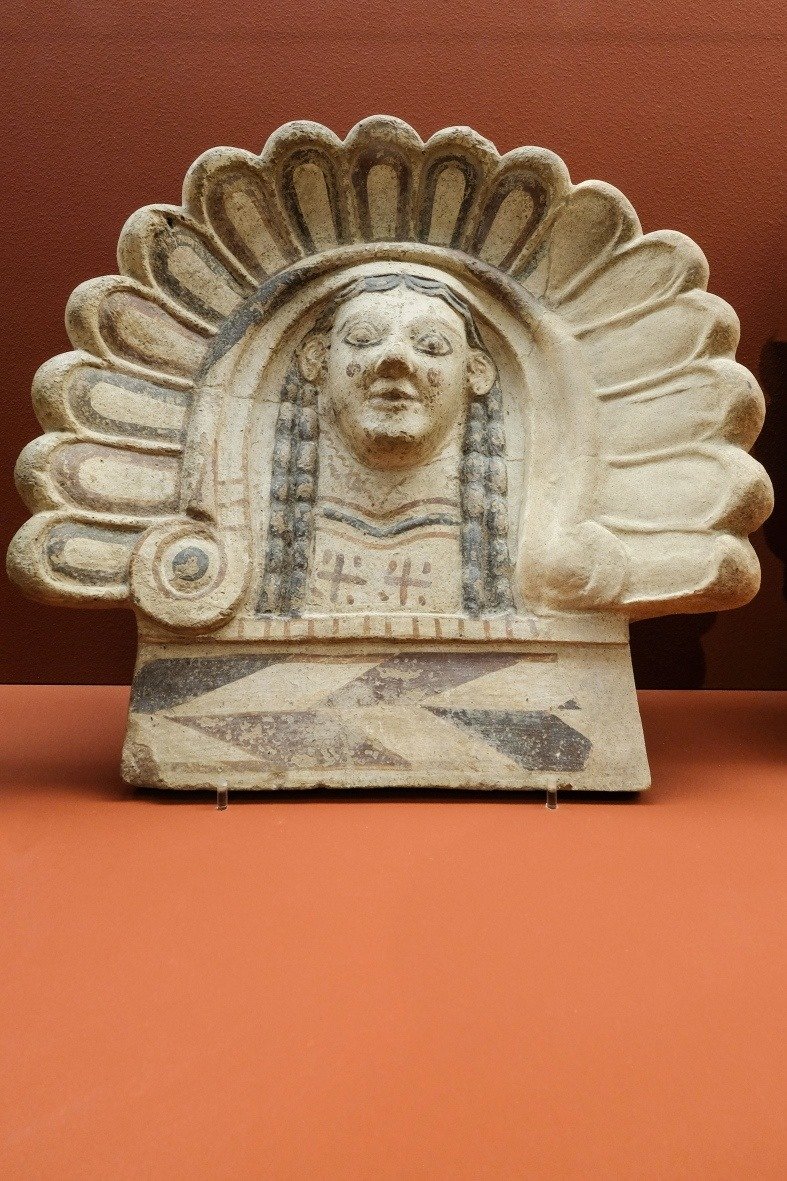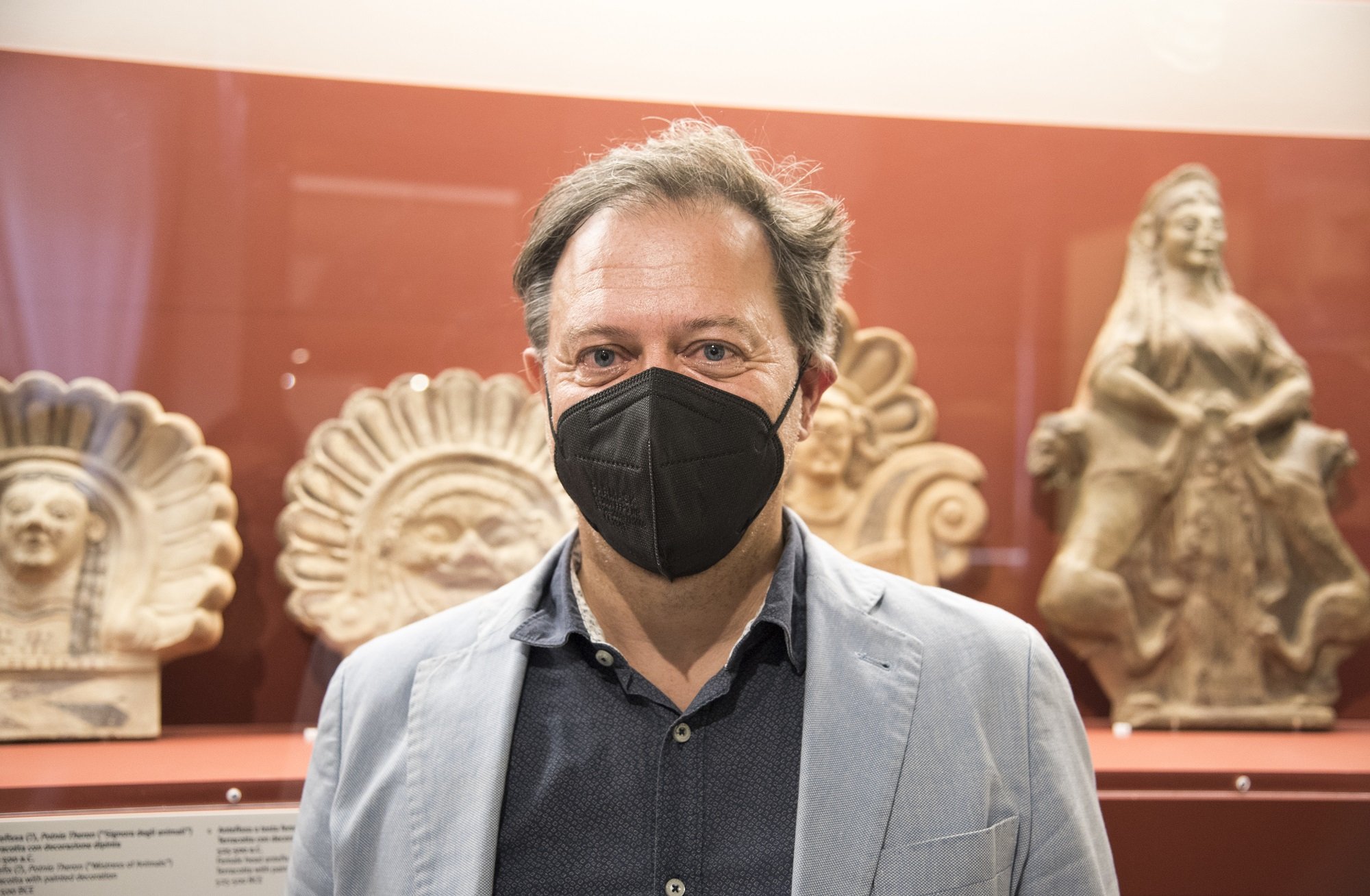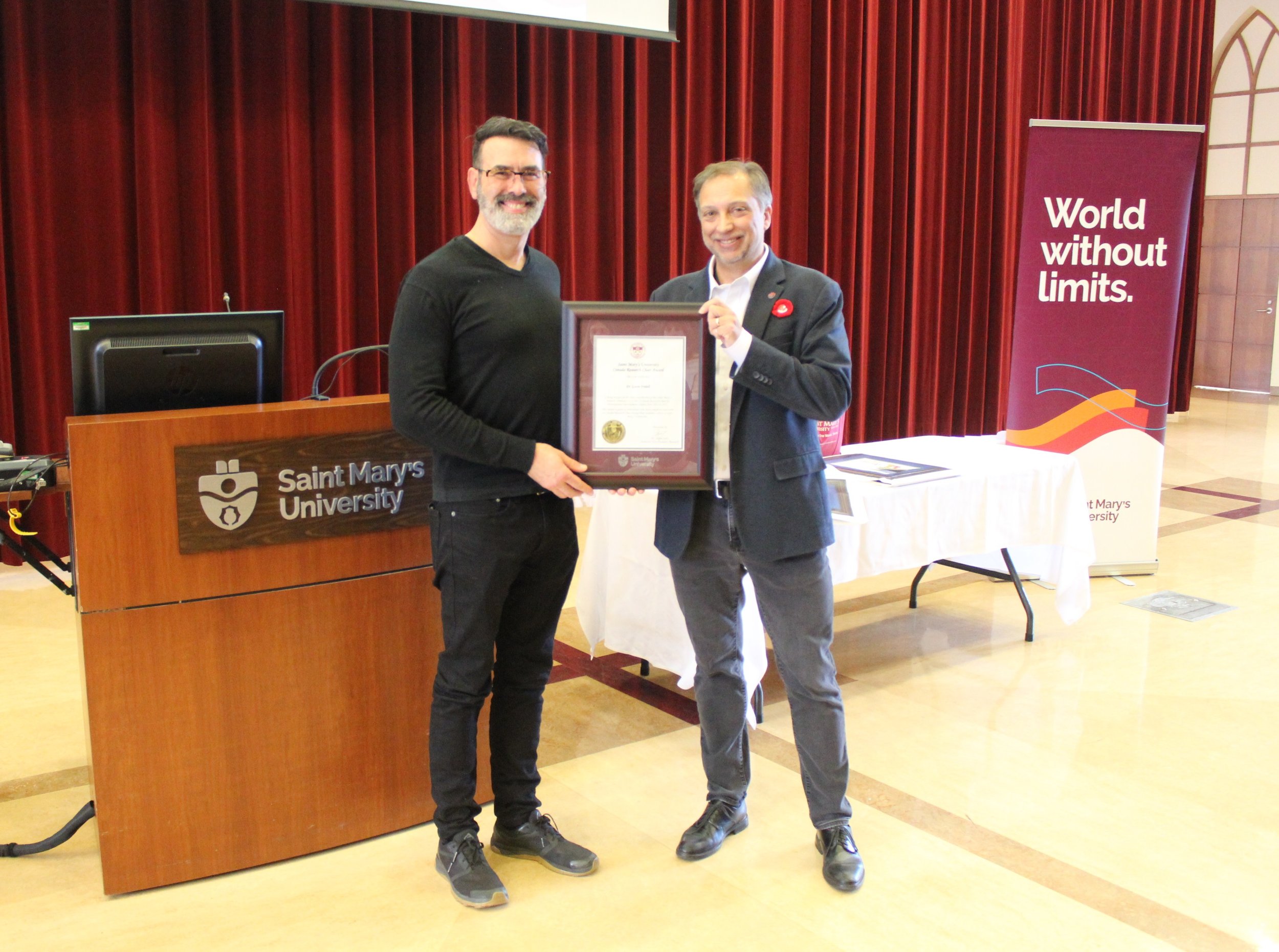
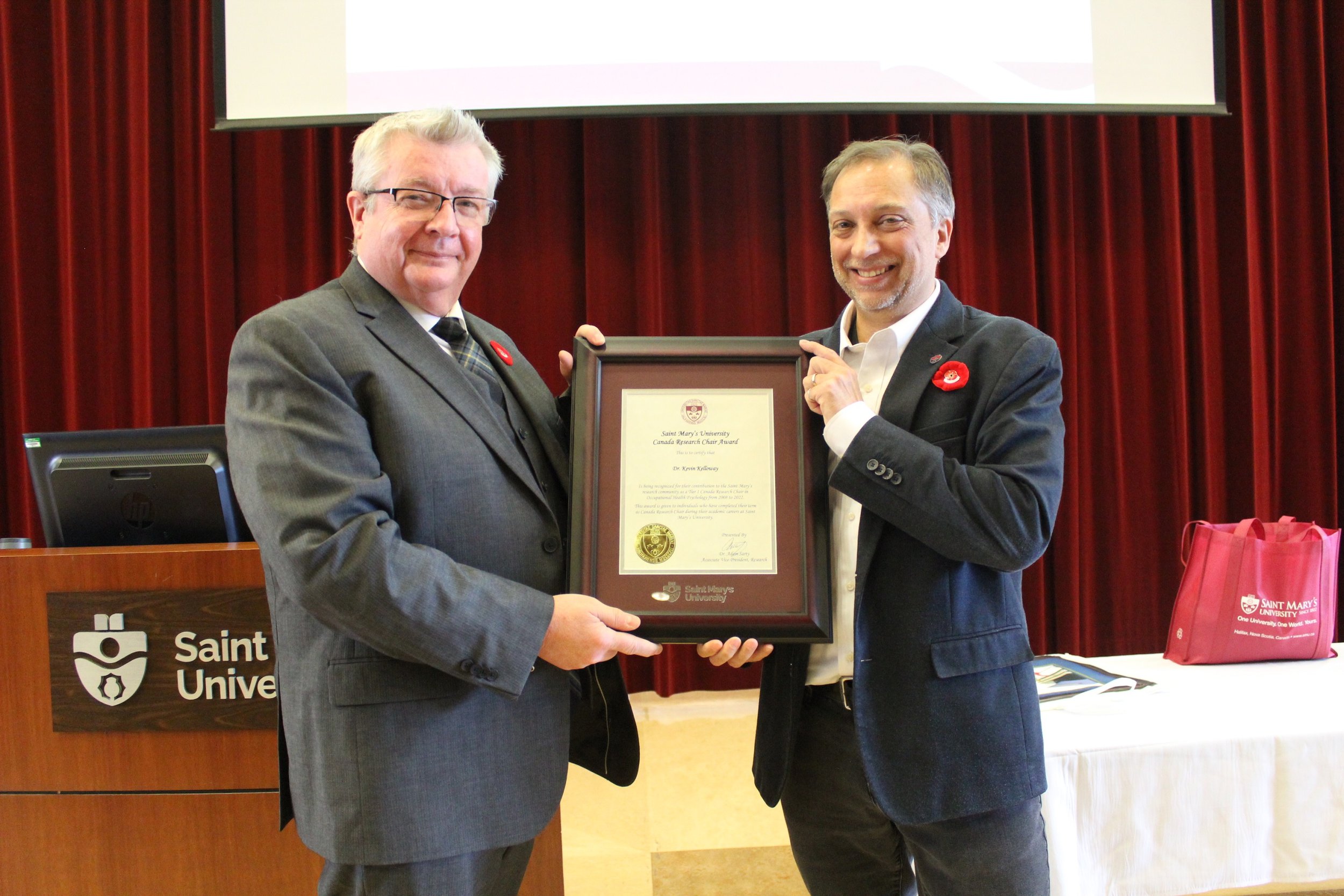
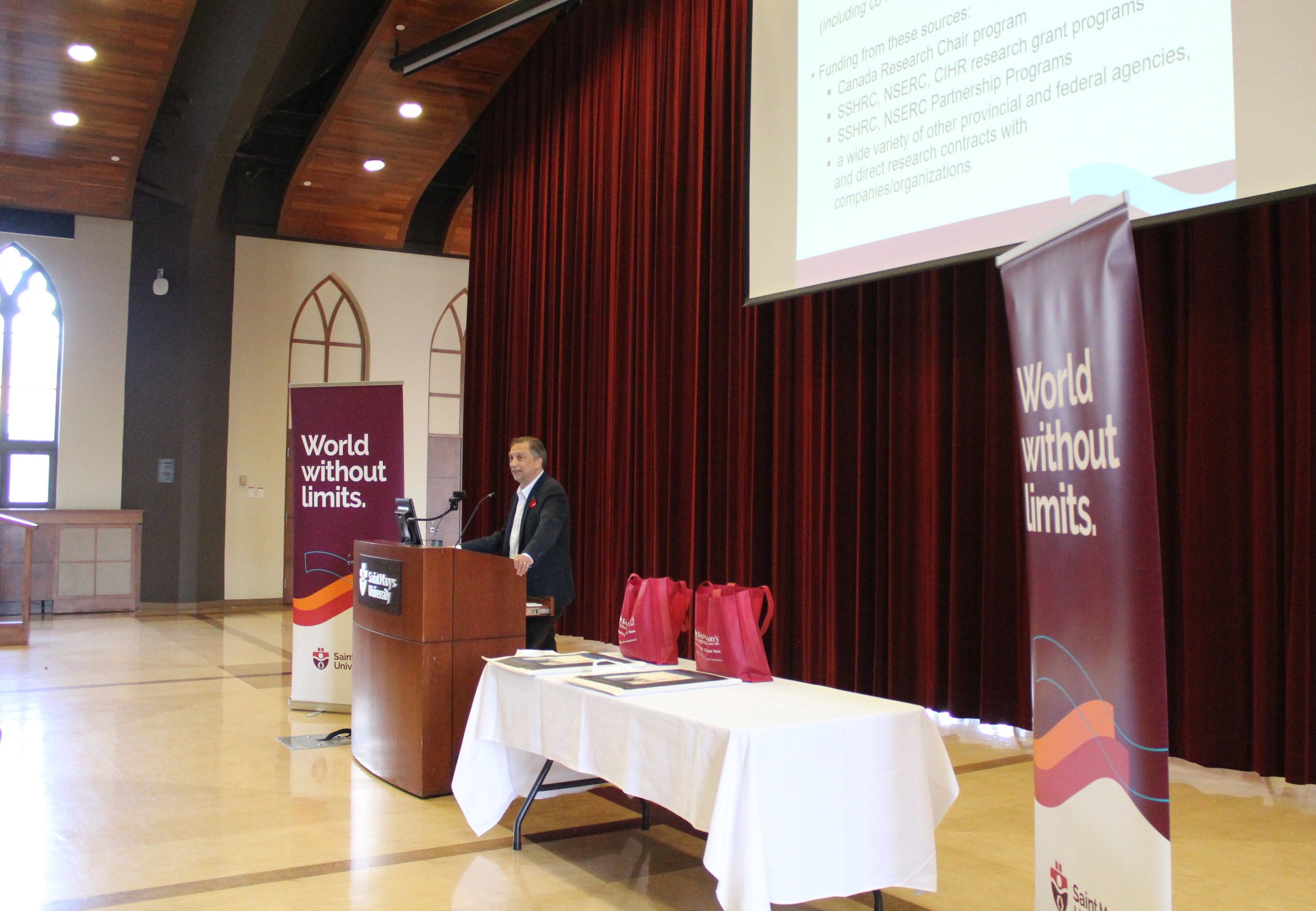
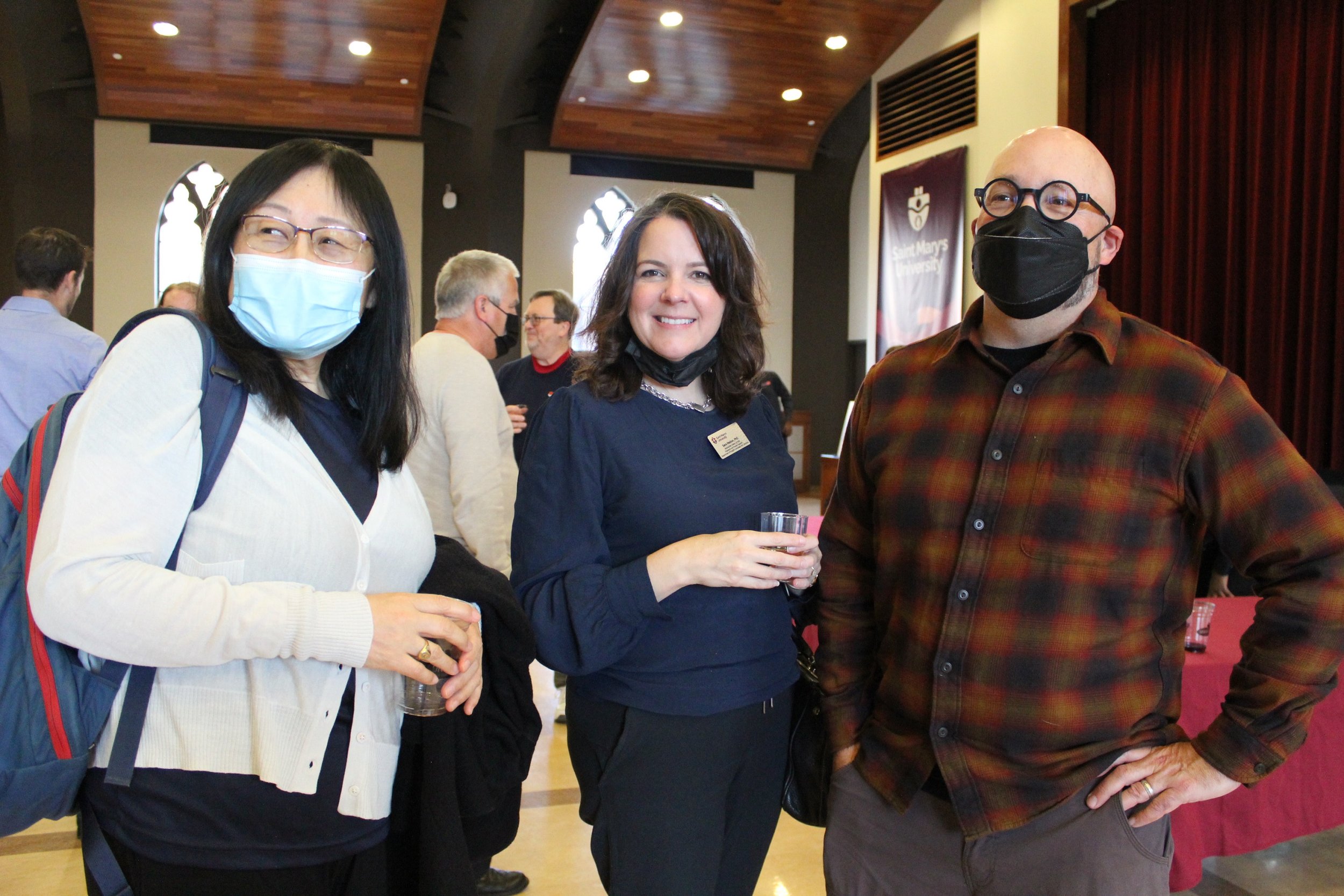

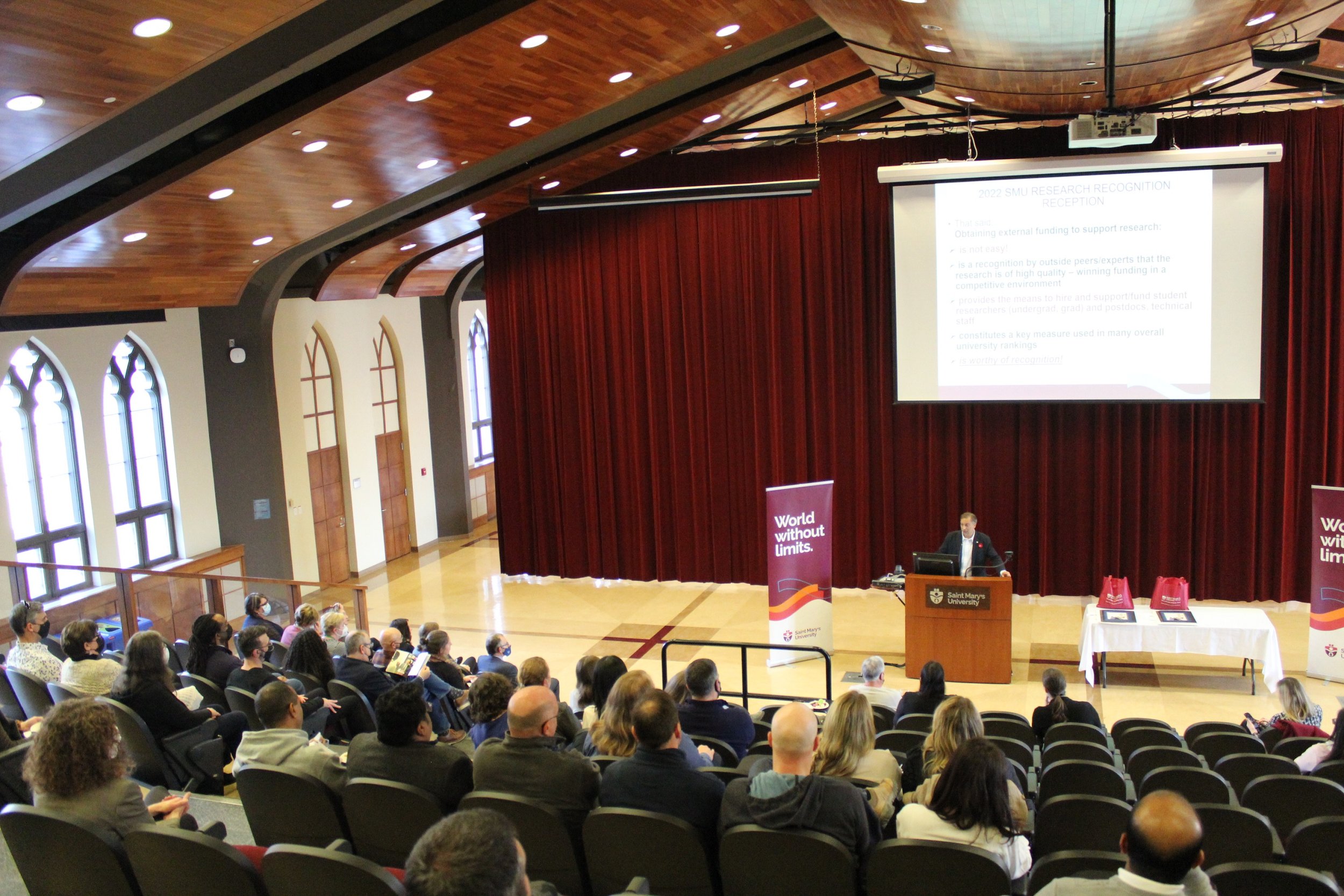
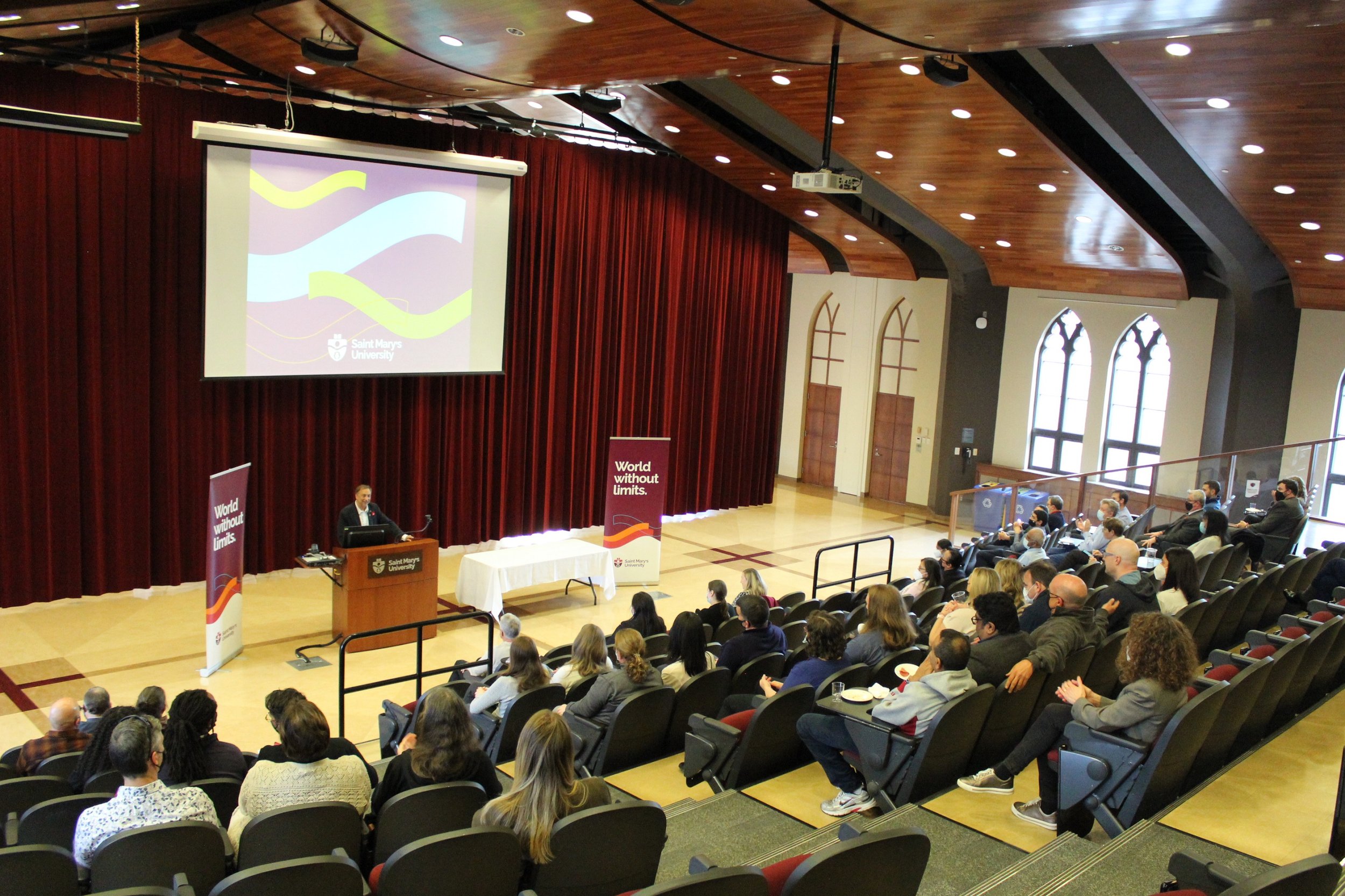
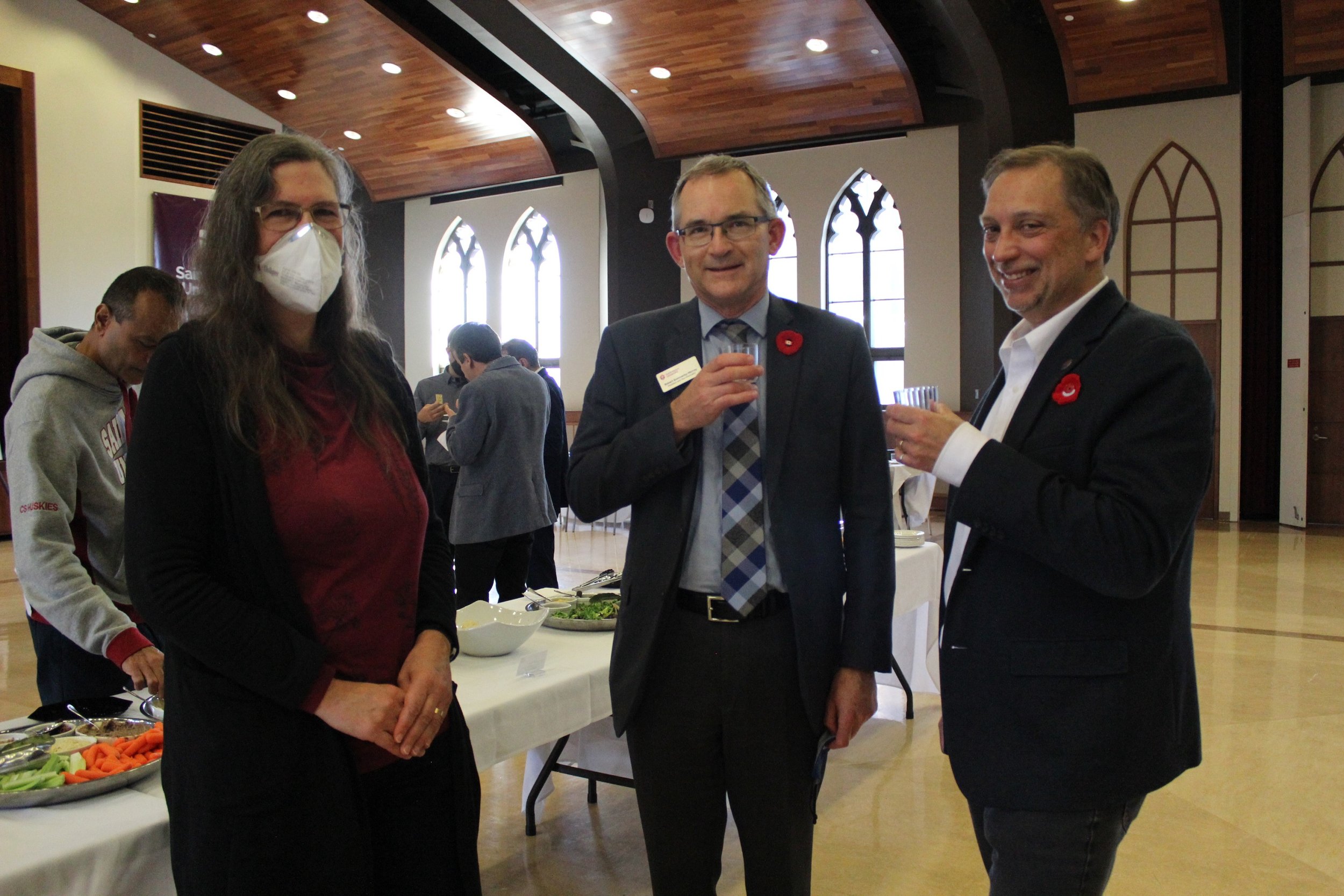
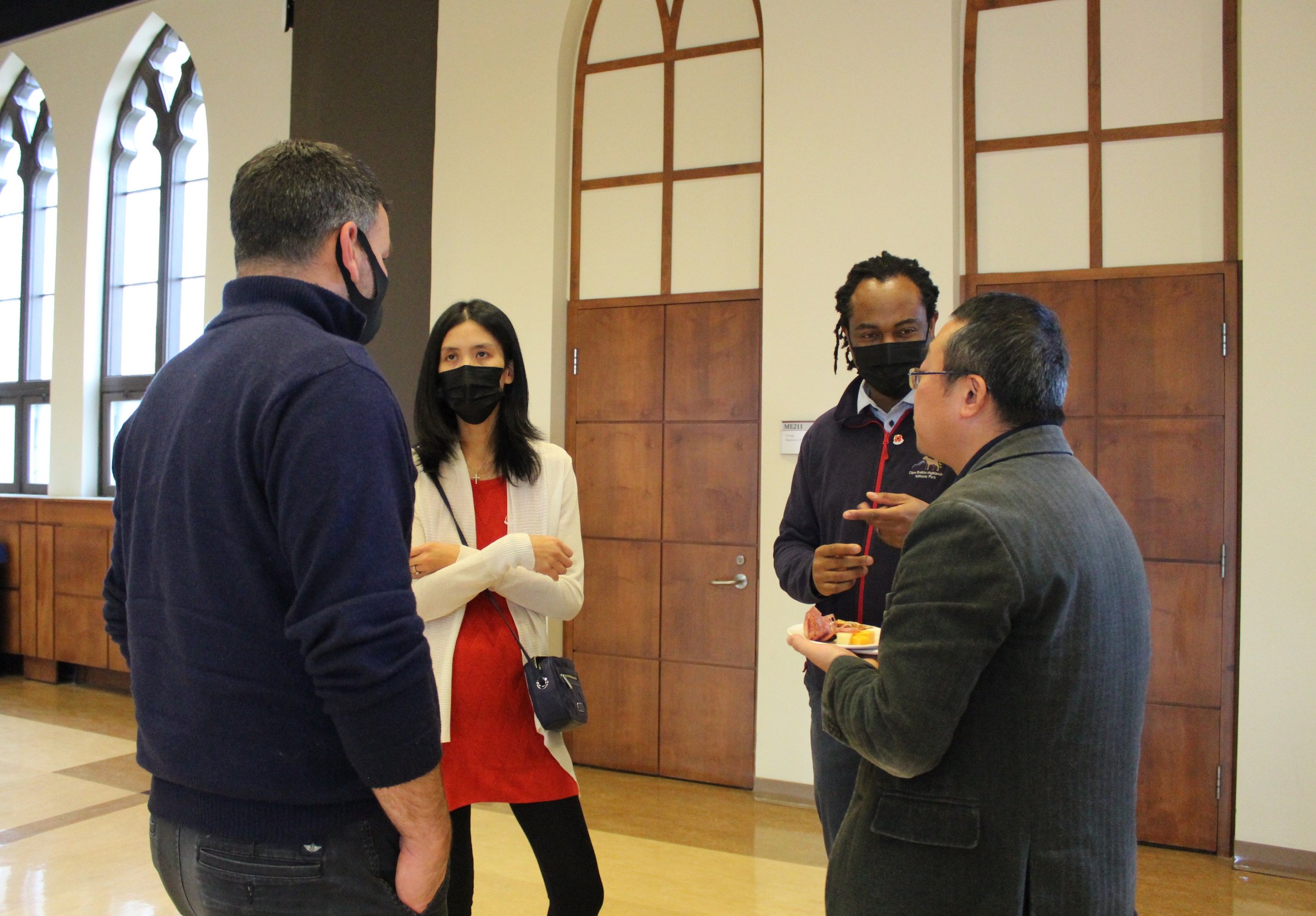
Researchers at Saint Mary’s University continue to be recognized for their important work in their fields, securing over $11 million dollars in external funding in the form of research contracts, Canada Research Chair positions and tri-council grants, over the last 12 months.
A celebration to honour 90 researchers from faculties of Science, Arts, and the Sobey School of Business took place in the McNally Theatre Auditorium on November 10th. A few examples of how their research contributions will impact our communities include investigating healthcare resource planning for older adults, exploring how to retain international students in Atlantic Canada, and enhancing Canadian vaccination strategies using machine learning and business analytics.
Special recognition was given to Dr. Gavin Fridell, Tier 2 Canada Research Chair (CRC) in International Development Studies (2012 to 2022) and Dr. Kevin Kelloway, Tier 1 CRC in Occupational Health Psychology (2008 to 2022) for completing their CRC terms during their academic careers at Saint Mary’s University.
Our ecosystems will benefit from Saint Mary’s researchers that are implementing small-scale fisheries guidelines, conducting salt marsh restoration and community-based watershed monitoring. Other research is determining the future impacts of freezing and storing sperm to assist the endangered Inner Bay of Fundy Salmon population.
The quality of research happening here at Saint Mary’s University is something that we should all be proud of, congratulations again to the CRCs who recently completed their terms, and all of those that have been recognized.










